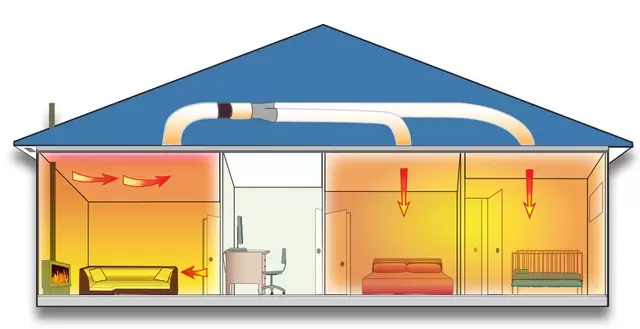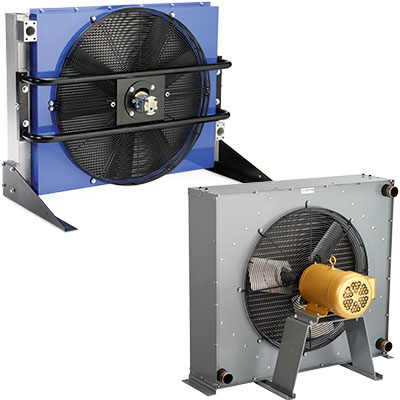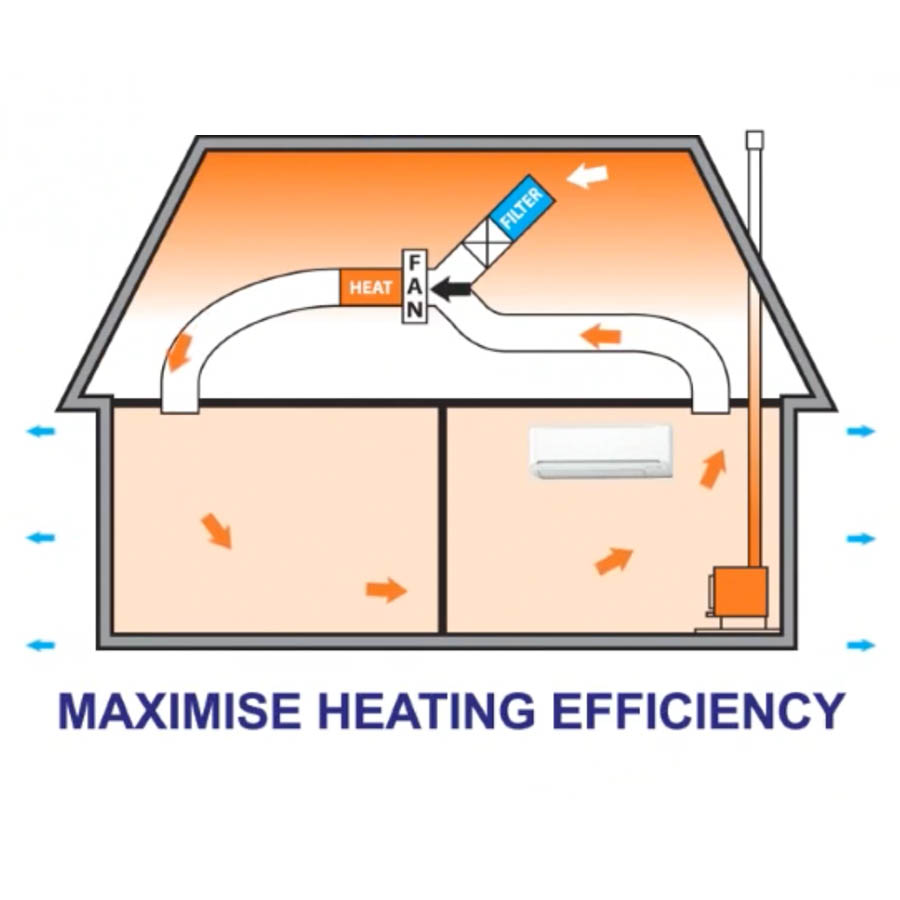A Comprehensive Guide to Choosing the Right Heat Transfer Systems for Your Requirements
Picking the proper Heat transfer system is vital for functional efficiency. Different systems accommodate various requirements, affected by factors such as temperature range and liquid kind. Recognizing the concepts behind Heat transfer, such as radiation, convection, and transmission, is critical. Additionally, reviewing energy sources and upkeep methods can affect long-term efficiency. A closer exam of these factors to consider discloses exactly how to tailor a system to specific requirements. What should one prioritize in this complex decision-making procedure?
Recognizing Heat Transfer: Trick Principles and Concepts
Heat transfer might appear like an uncomplicated principle, it includes an array of concepts that are essential for effective system style - DVS Heat Transfer Systems. Recognizing these concepts is crucial for designers and engineers that intend to maximize thermal performance in various applications. Conduction, for circumstances, involves the transfer of Heat via solid materials, while convection refers to the movement of Heat within liquids. Radiation, one more essential concept, defines how Heat can be moved via electromagnetic waves. Each of these systems plays a crucial function in determining how energy relocates within a system. By thoroughly understanding these ideas, specialists can make educated decisions, making certain that Heat transfer systems run effectively and meet the details demands of their applications
Sorts Of Heat Transfer Systems: An Overview
Recognizing the concepts of Heat transfer prepares for checking out the various sorts of Heat transfer systems readily available. Heat transfer systems can be classified primarily into three types: transmission, convection, and radiation. Transmission entails Heat transfer through strong materials, depending on direct call in between particles. Convection, on the various other hand, happens in liquids (liquids and gases) where the motion of the fluid itself helps with Heat transfer. Radiation entails the transfer of Heat with electromagnetic waves and does not call for a medium, allowing it to occur in a vacuum cleaner. Each kind of system has unique features and applications, making it crucial for individuals and organizations to thoroughly assess their specific demands when choosing the most appropriate Heat transfer solution.
Applications of Heat Transfer Solutions in Various Industries
Heat transfer systems play a crucial role throughout numerous sectors, affecting performance and product quality. In commercial production procedures, they help with accurate temperature control, while in food and drink processing, they guarantee safety and preservation. Additionally, a/c and climate control systems rely greatly on effective Heat transfer to maintain comfy settings.
Industrial Production Processes

Countless commercial manufacturing processes count heavily on efficient Heat transfer systems to optimize performance and improve item high quality. In industries such as metalworking, Heat exchangers play an essential duty in keeping ideal temperatures throughout welding, spreading, and building. These systems guarantee consistent Heat circulation, which is crucial for accomplishing wanted product residential properties. In the chemical manufacturing industry, Heat transfer systems promote exact temperature control during responses, affecting return and security. Moreover, in textile manufacturing, effective Heat monitoring is very important for coloring and finishing processes, affecting color consistency and material top quality. By picking ideal Heat transfer modern technologies, makers can boost power effectiveness and minimize operational prices, ultimately leading to an extra competitive and sustainable production atmosphere.
Food and Drink Handling
Efficient Heat transfer systems are just as important in the food and beverage handling market, where preserving optimal temperatures is essential for food security and high quality. These systems play an important duty in processes such as food preparation, sterilization, and pasteurization, guaranteeing that products are risk-free for intake and retain their dietary worth. Heat exchangers, as an example, successfully move Heat in between liquids, maximizing energy usage while reducing temperature variations. Additionally, refrigeration systems are fundamental for extending and preserving perishable items service life. The selection of Heat transfer innovation directly impacts operational performance and item integrity, making it critical for food and drink makers to select the ideal systems tailored to their specific handling demands. This mindful choice eventually adds to consumer satisfaction and food safety and security.

Heating And Cooling and Climate Control
While several industries rely upon Heat transfer systems for effectiveness, HVAC (Home Heating, Air Flow, and Cooling) plays a necessary duty in preserving interior environment control throughout various settings. These systems use Heat transfer concepts to control temperature, humidity, and air high quality, ensuring convenience and security in domestic, business, and commercial settings. Correctly designed cooling and heating systems enhance power effectiveness, decrease operational prices, and lessen environmental impact. In a fantastic read business structures, for example, effective climate control adds to worker performance and consumer satisfaction. In industrial applications, a/c systems help keep excellent problems for devices operation and item conservation. Choosing the appropriate Heat transfer system is vital for meeting certain environment control requirements and attaining overall system performance.
Examining Power Sources for Heat Transfer Equipments
In examining energy resources for Heat transfer systems, a contrast of renewable resource alternatives and nonrenewable fuel source considerations is crucial. Renewable sources, such as solar and wind, offer lasting choices that can reduce ecological impact. Alternatively, nonrenewable fuel sources continue to be widespread as a result of their recognized facilities and energy thickness, prompting a mindful assessment of both choices.
Renewable Power Options

Nonrenewable Fuel Source Considerations
Reviewing fossil gas factors to consider is vital for the effectiveness and sustainability of Heat transfer systems. Fossil fuels, such as all-natural gas, oil, and coal, are conventional energy sources that give considerable Heat output, making them popular selections for commercial and household applications. However, their environmental impact, including greenhouse gas emissions and resource depletion, increases issues. When picking a warm transfer system, it is crucial to analyze the availability, cost, and regulatory variables connected with these fuels. In addition, the efficiency of fossil gas systems have to be thought about, as greater performance can reduce some ecological downsides. Ultimately, a balanced method evaluating performance and sustainability can assist decision-makers towards the most suitable Heat transfer remedy for their specific requirements.
Variables to Think About When Picking a Warmth Transfer System
Choosing a proper Heat transfer system calls for mindful consideration of various elements that can substantially influence effectiveness and efficiency. One vital factor is the operating temperature variety, which dictates the products and style ideal for the application. In addition, the type of liquid made use of in the system-- whether gas or liquid-- impacts Heat transfer effectiveness and compatibility. The system's size and capability must straighten with the certain requirements of the procedure to prevent inefficiencies. Energy resource availability is likewise essential, affecting operating expenses and sustainability. Moreover, the installment setting, including room restrictions and ease of access for maintenance, plays a considerable role in system choice. Regulatory compliance and security criteria must be considered to guarantee the system satisfies all legal demands.
Upkeep and Efficiency Optimization for Heat Transfer Solutions
Keeping Heat transfer systems is essential for making sure maximum effectiveness and longevity. Regular upkeep tasks, such as cleaning Heat exchangers and examining insulation, aid stop efficiency losses as a result of fouling and thermal bridging. Furthermore, monitoring system criteria, including pressure and temperature, permits very early detection of abnormalities, minimizing downtime and expensive repairs. Applying a preventive upkeep timetable can enhance performance and extend the lifespan of elements. In addition, upgrading to innovative control systems can improve functional performance by getting used to varying problems and loads. By prioritizing maintenance and performance optimization, operators can achieve minimized power consumption, reduced functional prices, and improved overall system reliability, eventually resulting in better resource use and an extra sustainable operation.
Future Trends in Heat Transfer Technologies
As industries significantly focus on sustainability and energy effectiveness, future patterns in Heat transfer technologies are set to undergo significant transformations. Technologies such as sophisticated materials, including carbon nanotubes and nanofluids, assure boosted thermal conductivity and effectiveness. Furthermore, the combination of eco-friendly energy resources right into Heat transfer systems is getting energy, promoting environmentally friendly remedies. Smart technologies, consisting of link IoT sensors, are expected to revolutionize tracking and control, making it possible for real-time information analysis for optimized efficiency. Additionally, the development of compact and modular systems will facilitate simpler setup and maintenance, satisfying diverse applications. These innovations suggest a change towards more sustainable, reliable, and versatile Heat transfer services, straightening with global power goals and ecological criteria.
Regularly Asked Questions
What Are the Ecological Influences of Heat Transfer Solutions?
The ecological effects of Heat transfer systems can consist of greenhouse gas exhausts, energy usage, and possible thermal pollution. Additionally, improper disposal of materials and inadequacies can add to resource deficiency and community disturbance.
Exactly how Do I Compute the Cost-Effectiveness of a Warm Transfer System?
To calculate the cost-effectiveness of a warm transfer system, one have to examine initial costs, operational expenses, upkeep demands, and power efficiency, contrasting these variables versus the anticipated lifespan and efficiency of the system.
Can Heat Transfer Equipment Be Used in Residential Settings?
Heat transfer systems can undoubtedly be used in property settings. They provide effective home heating and cooling down options, making homes extra comfy while possibly reducing power prices. Their flexibility permits numerous applications in property environments.
What Safety Rules Relate To Heat Transfer Systems?
Safety and security guidelines for Heat transfer systems generally consist of standards on setup, maintenance, and procedure. Conformity with regional structure codes, producer specs, and market requirements is necessary to ensure risk-free and effective system efficiency in numerous applications.
Exactly How Do Various Materials Affect Heat Transfer Performance?

Transmission, for instance, includes the transfer of Heat with strong products, while convection refers to the movement of Heat within liquids. Recognizing the concepts of Heat transfer lays the foundation for checking out the different types of Heat transfer systems available. Heat exchangers, for instance, effectively move Heat in between liquids, optimizing power usage while reducing temperature changes. In reviewing power resources for Heat transfer systems, a contrast of eco-friendly power choices and fossil fuel considerations is necessary. Steels, such as copper and light weight aluminum, conduct Heat efficiently, whereas insulators like rubber and glass reduce down Heat circulation.